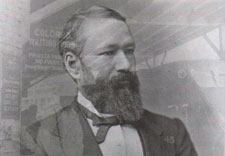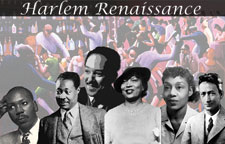Jim Crow Museum
1010 Campus Drive
Big Rapids, MI 49307
[email protected]
(231) 591-5873
Thomas Dartmouth Rice, a struggling white actor, became famous by performing in blackface makeup as "Jim Crow," an exaggerated, highly stereotypical black character. By 1838, the term "Jim Crow" was being used as a collective racial epithet for black people, not as offensive as nigger, but as offensive as coon or darkie. The popularity of minstrel shows aided the spread of Jim Crow as a racial slur. By the end of the 19th century, Jim Crow was being used to describe laws and customs that oppressed black people.
1870
A Virginia law made it illegal for black and white children to attend the same schools.
1875 March 1
Congress passed the Civil Rights Act of 1875, which prohibited discrimination in public
accommodations, including inns, theaters, public conveyances on land or water, and
"other places of public amusement."
1877 March 2
Republican Rutherford B. Hayes was elected President by the Electoral College after
a deal was worked out with leading southern Democrats. The withdrawal of all remaining
federal troops from the South marked the effective end of Reconstruction.

Thousands of southern black people frustrated with discrimination and poverty in the South emigrated to the West. They met hostility from western white people and Native Americans. This is sometimes called the Exodus of 1879.
1882
In 1882, at least 49 black people were lynched. According to Tuskegee Institute data,
3,438 black people were lynched between the years 1882 and 1951.
1883 October 15
The United States Supreme Court ruled in Civil Rights Cases of 1883 that the Civil
Rights Act of 1875 was unconstitutional. The Court ruled that the 14th Amendment prohibited
states, but not citizens, from discriminating. This civil rights reversal was devastating
for African Americans.
1890-1908
Southern states adopted new constitutions and voting laws designed to disenfranchise
black voters.
1892
Ida B. Wells began writing articles and campaigning against lynching. At least 161
black people were lynched in 1892, probably the highest number in a single year.

In Plessy v. Ferguson, the United States Supreme Court established the "Separate but Equal Doctrine," holding that legal racial segregation does not violate the equal protection clause of the 14th Amendment.
1903
The Souls of Black Folk by W.E.B. Du Bois was published. According to Manning Marable, author of a biography
of Du Bois, The Souls of Black Folk "helped to create the intellectual argument for the black freedom struggle in the
twentieth century."
1909 May 31- June 1
The National Negro Conference met in New York City and founded the National Association
for the Advancement of Colored People (NAACP).
1913-1921
Woodrow Wilson institutionalized segregation in the federal civil service. By the
end of World War I, the District of Columbia was thoroughly segregated as well.
1914
Every southern state and many northern cities had Jim Crow laws that discriminated
against black Americans.
1914
Marcus Garvey established the United Negro Improvement Association (UNIA) in Jamaica,
which promoted black nationalism and pan-Africanism. Later in the decade, Garvey moved
his headquarters to New York City and the UNIA became a large grassroots movement.

The movie Birth of a Nation, based on Thomas Dixon's The Clansman, popularized many anti-black caricatures, especially the Brute. The movie also glorified the Ku Klux Klan (KKK) and helped lead to its resurgence.
1915-1930
In the Great Migration, rural southern black people moved to northern cities, to the
West, and to southern cities. Between 1915 and 1920, 500,000 to 1 million moved to
the North; another 700,000 to 1 million moved to the North and West in the 1920s.
1917
The United States entered World War I. Approximately 370,000 black people saw service
during the conflict, including about 1,400 officers. Three black regiments received
the Croix de Guerre for valor.
1917 July
At least forty black people were attacked and killed during a race riot in East St.
Louis, Illinois. Three weeks later, some 10,000 black people participated in a silent
march down Fifth Avenue in New York City to protest racial oppression, especially
riots directed against black communities.
1919
Many white people, resentful of black demands for equality, attacked black people.
Chicago, Houston, Little Rock, Harlem, Washington D.C., New York, Baltimore, New Orleans,
and many other cities had outbreaks of rioting as white people attacked black people
throughout the United States. This period is called the Red Summer.
1920 August 18
The 19th Amendment to the United States Constitution was ratified, giving women the
right to vote.

The Harlem Renaissance was a major artistic awakening among African-Americans. Key figures included Claude McKay, Jean Toomer, Jacob Lawrence, Langston Hughes, and Zora Neale Hurston.
1925
The Ku Klux Klan had 3 million members during its heyday in the early 1920s. Roughly
half its members lived in metropolitan areas, and although it enjoyed considerable
support in the South, the Klan was strongest in the Midwest and Southwest. On August
8, 1925, 35,000 members of the Klan marched down Pennsylvania Avenue in Washington,
D.C.
1928 November
Oscar DePriest, a Chicago Republican, was the first African American elected to Congress
from a district north of the Mason-Dixon Line.
1936 August 9
Jesse Owens became the first American to win four gold medals in one Olympics. His
athletic success was a direct refutation of Adolph Hitler's ideology of Aryan supremacy.
1940-1960
The coming of World War II signaled the beginning of another wave of black migration
from rural areas to urban areas, and from the South to the North and West. By 1960,
40% of African Americans lived in the North and West, and nearly three-quarters lived
in cities.
1941
President Franklin D. Roosevelt issued Executive Order 8802, which eliminated hiring
discrimination in the defense industry and established the Fair Employment Practices
Commission. In response, black leaders, including A. Philip Randolph, canceled a planned
march on Washington.
1942
The Congress of Racial Equality (CORE) was founded in Chicago.
1945
World War II ended. Approximately 1,150,000 black people were inducted into the military,
with most serving in support units.

Gwendolyn Brooks won the Pulitzer Prize for Annie Allen, a volume of poetry. She was the first African American to win the award.
1952
The Tuskegee Institute reported that 1952 was the first year with no reported lynchings
since it began keeping records.
1953
Malcolm X became a minister in the Nation of Islam.
1955
The Maryland legislature passed a law that imprisoned any white woman who birthed
a mixed-race child. The white woman would be incarcerated up to five years. The law
was renewed in 1957.

An Alabama law barred black and white people from playing cards, dominoes, checkers, pool, football, baseball, basketball, or golf together. A North Carolina law required factories and plants to maintain separate bathrooms for black employees. A Louisiana law mandated that movie theaters and all places of public entertainment separate white and black patrons.
1958
The Virginia legislature voted to close any school that enrolled both black and white
students.
1959
An Arkansas law required all state buses to designate whites-only seating areas.